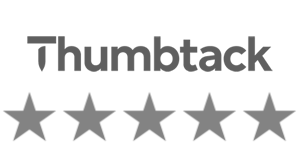If you’re seeking to build wealth and generate passive income through rental properties, investing is one way to do both. But you must conduct sufficient research before spending your hard-earned cash.
Renting out property involves numerous responsibilities, from finding tenants to maintaining it and collecting rent. While investing can be daunting for newcomers, when executed successfully it can provide rewarding returns. Having a professional property management like Mark Brower Properties is key to your success.
Location of Rental Home
Location is one of the key elements to keep in mind when considering an investment property as a rental home, not only because it affects how much money is available for purchase, but also because its effect will have an impactful long-term result – investing in something that pays dividends is surefire way of building wealth and protecting family finances alike!
Locating major attractions, like multiple shopping and dining options, quality schools and an economic environment conducive to employment is bound to draw renters in. Successful locals will likely provide high-paying tenants without breaking the bank; you could potentially enjoy steady income over years and years! Finding an optimal combination of amenities that makes your neighborhood unique yet retains most of its population is key for long-term success.
If you are looking to rent out homes in the Phoenix AZ metro area contact Mark Brower Properties for help. Our property management team in Phoenix, AZ are experts and have helpful information that can give you an advantage in having success.
Cash flow of Rental Home
Investors consider cash flow when selecting rental homes as investment properties. Their goal should be to generate enough funds from rent to cover expenses such as mortgage payments, maintenance and repairs expenses, taxes, insurance costs and property management fees.
However, cash flow should not be seen as the sole indicator of profitability and it can be challenging to determine what constitutes “healthy” levels of cash flow for any given rental property. Opinions can differ and expectations vary between investors.
Cash flows generated from potential rental homes depend on various factors, including their type and location; for instance, single-family residential properties located within cities will generate different results than commercial ones located within suburbs. Furthermore, tenant type will influence how much income can be generated from potential rental homes as will size and location considerations.
Calculating the cash flow potential of rental properties includes considering vacancy rates as another key element. After tenants move out, cleaning, repainting and reselling takes time and costs money; additionally, advertising must take place to reach prospective renters who could become tenants in future rentals.
Avoiding expenses that drain cash can help boost cash flow and add value to your investment. By minimizing vacancy and charging more for features that generate additional income (like a garage or parking pad) you may also increase cash flow and return.
Keep in mind, however, that even the best-run properties will experience vacancy at times; 100% occupancy rate simply won’t be possible. In order to account for this reality in your cash flow calculations and work with an agent who can give an accurate vacancy rate estimation.
Maintaining low vacancy rates can be challenging, yet crucial for maintaining cash flow. You can lower vacancies by responding quickly to tenant requests, offering incentives such as free internet or laundry machine use and appealing your property taxes if they increase too rapidly.
Rental Home Renovations
Rental homes can be an ideal investment to generate passive income for investors, however managing one can be time-consuming and requires ongoing care and maintenance to attract tenants quickly.
One way renovations can help your property generate passive income is through increasing its value – while they may incur costs, they’re an opportunity to recoup these costs and generate higher returns on investment.
Renovation of a rental property should include several steps. First, inspect it from both structural and mechanical perspectives in order to detect any major issues that could cause damage or income losses, such as insulation, heating/cooling system, plumbing or any other major systems that need to be updated or repaired.
If there are any major issues in your home, they must be addressed quickly in order to save both money and headaches later. Also, this will keep it looking attractive to potential tenants who might choose your place as their next residence.
Once your basics are covered, you can focus on attracting and retaining tenants through small renovations that won’t break the bank. Upgrades like these will improve the appeal of your property while increasing rent rates and profits over time.
Before beginning any renovations on your property, research its location and surrounding area in detail to gain an idea of which upgrades might best fit.
As there are numerous factors to keep in mind, start by prioritizing rooms most likely to attract renters. The kitchen is where many spend most of their time; updating cabinets, countertops, and appliances to appeal to potential renters could go far in making a great first impression statement about who lives in your rental property.
Your rental property needs to consider the potential of adding extra spaces that could add significant value and attract tenants, such as sunroom additions or finishing basement space to increase living area and raise rents at once while increasing its worth as an asset.
Taxes on Rental Home Investment Property
If you plan to rent out your home as an investment property, several things must be kept in mind. One is taxes; these may depend on where the property is located and how much revenue it produces; another factor could be its potential appreciation and how that might translate to future income generation.
How you intend to sell the property will have an effect on your tax liabilities; renting out for at least several years may bring more tax advantages.
Depreciation can be an invaluable advantage to investors. It allows them to write off the value of their property against taxes over its useful lifetime; for residential rental buildings this usually lasts 27.5 years.
Utilize tax-friendly financing options such as adjustable rate mortgages (ARMs) and blanket mortgages to maximize depreciation deduction. In addition, make sure that the investment property is maintained and repaired regularly.
As well as tax benefits, being a landlord can also bring with it passive income from tenants that will provide you with extra security in retirement or for other financial goals.
If you plan to file tax returns, keeping meticulous records can make the process simpler for you and help avoid common errors that could compromise your return filing.
At last, you should discuss with a tax expert the potential tax benefits of owning rental property. He or she can assist in finding appropriate deductions that apply specifically to you and your situation.
As part of your tax basis calculations for any property purchase, including houses or apartment buildings, it’s also necessary to determine its tax basis – this figure represents how much was spent purchasing it when purchased or can vary depending on whether or not you inherited or traded for something different as well as paying back any loans taken out on it.




